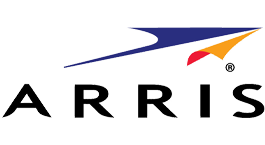Default logins for 10.0.0.1
Login Steps
If your router uses the 10.0.0.1 IP address, you will be able to log on to its console simply by typing it in your browser. You will need to be connected to the network with your computing device for the same. Here's how you can log on to your router.
1 Find Your Router's IP Address
The first step to logging in to your router's console is to figure out its IP address. If you've forgotten the address, you won't be able to log in on the page. However, you can easily find the address in many ways:
- On Windows, one way to find the IP address is to use the ipconfig command on your command prompt. The IP address of the default gateway will be the one for your router. Another way to check the IP address is to use the Network and Sharing Center on your PC. You need to open the panel, click on the "Connections" tab and then check its details. You will be able to see the IP address under the IPv4 Default Gateway column.
- On a Mac system, you will be able to check the IP address in the utility window with the netstat command or under system preferences.
- On your mobile device, you can click on the advanced properties of your connection to find out the IP address.
2 Log In to Your Router
After you've found out the IP address of your router through the default gateway option, you can log on to it. First, you need to type in the IP address of your router in the browser. In this case, the address is 10.0.0.1. After this, the browser will convert the address into a link such as http://10.0.0.1 and then open the login screen for you. Here, you will have to fill in the default username and password for the router login. If you've changed the password in the past, you can log on with those credentials. After submitting the details, you will be able to access the control panel of your router and change its configuration.
3 Reset and Troubleshoot Router
A lot of times when we change the settings of our router, it stops working or interferes with the network connection. Thus, we need to revert these changes. You need to write down the previous values of all the settings that you're going to change so it's easier to go back when there's a problem. However, if you've done everything right and the router still doesn't work, you may have to reset it. You can click the reset button on your router for 15-30 seconds for the reset operation. The router will reboot and set itself up with all the default settings.
10.0.0.1 IP Address
Each computer or device in a network is recognized with the IP address assigned to it. The network can be the internet or can be part of a smaller local network. A Public IP address is the one that's accessible to everyone on the internet. On the other hand, a local IP address is one that your router assigns to every device that's connected to it. The local IP address is not accessible to everyone on the internet and just the devices connected by the router.
One of the most common private IP addresses for business networks is 10.0.0.1, which can be assigned to any device on the local network in the address range. This address, however, is the default IP address of many broadband routers, including Cisco and Infinity.
When to Use the 10.0.0.1 IP address
The 10.0.0.1 IP works as the default IP address of many routers so you can access them and change their settings over the network. The setting changes may include opening up a range of ports, setting a firewall on your network or assigning a primary device that receives all your messages.
Many administrators choose this address for their routers for their business networks as it's easy to remember. Many at-home devices also use this address for the simplicity of it. However, some of the more popular IP addresses for routers are 192.168.0.1 and 192.168.1.1.
IP Address Conflict
If you have more than one router at home, chances are that they might have the same IP address. Thus, when you try to log on to one of the routers, it may show you the page of another one or none at all. To avoid this, you need to ask the administrator to set up a static IP address for your device so it's not in conflict with the other one.
You also shouldn't mistype your address on the webpage. The results will display that the device isn't available. It’s a good idea to always check your router's address before typing it in.
Manufacturers Using 10.0.0.1 IP Address
There are many manufacturers of routers that use the 10.0.0.1 IP address because it's simple and easy to remember. Traditionally suited for business networks with a large number of devices, many home routers are also taking up this IP address. Most popular router producers using 10.0.0.1 IP address as default include:
- Cisco
- SMC
- Technicolor
- Arris
- Aztech
Other organizations such as Intelbras, RFNet, and i-connect also produce routers that respond to the 10.0.0.1 IP address.
FAQ IP adddress
1. What is 10.0 0.1?
10.0.0.1 is a default IP address. The IP address always contains 4 sets of numbers ranging between 0 and 255. This is because each device connected to the internet is supposed to have a unique address. So, the first three sets are the network id, and the last set is the device id. In 10.0.0.1 the network id is 10. and the device id is .0.1
2. How to log in to 10.0 0.1 / How to login into 10.0 0.1 / How to use 10.0 0.1
First, type 10.0.0.1 in your browser’s address bar. Then, enter username and password, and then click OK or Login.
3. What are the (most common) default logins for 10.0 0.1?
The most common default logins for 10.0.0.1 IP address are Username: admin, Password: admin
4. What is the (most common) default username for 10.0 0.1?
The most common default username for 10.0.0.1 address is admin
5. What is the (most common) default password for 10.0 0.1?
The most common default password for 10.0.0.1 address is admin
6. 10.0 0.1 - How to Access Router IP Address?
First, type 10.0.0.1 in your browser’s address bar, Then, enter your username and password, and then click OK or LOGIN. The most common default logins to access 10.0.0.1 are - username: admin, password: admin
7. How to login into 10.0 0.1 / Hot to go to 10.0 0.1 / How to use 10.0 0.1
First, type 10.0.0.1 in your browser’s address bar, Then, enter your username and password, and then click OK or LOGIN. The most common default logins to access 10.0.0.1 are - username: admin, password: admin












